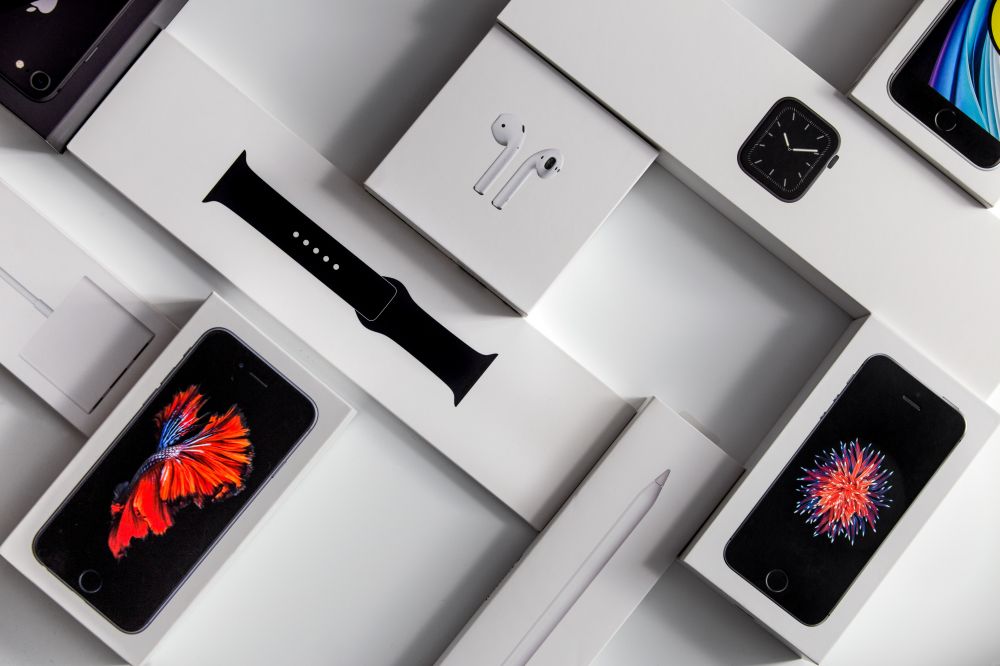Apple Air: The Ultimate Guide to Apples Revolutionary Product

Apple Air has become one of the most sought-after tech gadgets in recent years. Its sleek design, cutting-edge features, and unparalleled performance have captivated the hearts and minds of tech enthusiasts worldwide. In this comprehensive article, we will provide an in-depth overview of Apple Air, exploring its different types, popularity, and quantitative measurements. Additionally, we will discuss the differences between various Apple Air models, navigate the historical landscape of its pros and cons, and delve into its impact on the tech industry.
A Comprehensive Presentation of Apple Air
Apple Air is a versatile range of devices designed and manufactured by Apple Inc. that offer a seamless user experience and optimal mobility. From laptops to headphones, the Apple Air lineup caters to a range of technological needs. The three main types of Apple Air products include MacBook Air, AirPods, and iPad Air, each targeting a specific market segment.
MacBook Air, renowned for its lightweight design and impressive battery life, has become a staple for professionals and students alike. Its high-resolution Retina display, powerful processors, and enhanced storage options make it the go-to choice for those seeking a perfect blend of portability and productivity.
AirPods, on the other hand, revolutionized the way we listen to music, replacing traditional wired earphones with a wireless, Bluetooth-enabled alternative. Their sleek design, intuitive features such as touch controls, and exceptional audio quality have made AirPods immensely popular among music enthusiasts and commuters.
iPad Air, the tablet iteration of Apple Air, offers a larger screen size compared to its predecessors while maintaining a lightweight build. With the addition of advanced features like Apple Pencil compatibility and powerful processing capabilities, iPad Air has become a favorite for artists, content creators, and students.
Quantitative Measurements of Apple Air

The success of Apple Air can be measured by various quantitative metrics. Let’s take a closer look at some statistics that highlight its popularity:
1. Sales Figures: According to Apple’s financial reports, the MacBook Air, AirPods, and iPad Air consistently rank among the top-selling Apple products. In 2020 alone, Apple sold millions of units worldwide, reflecting the strong demand for these devices.
2. Customer Satisfaction: Several consumer surveys and reviews have consistently reported high levels of customer satisfaction with Apple Air products. This positive feedback is attributed to their excellent performance, durability, and seamless integration with other Apple devices.
3. Market Share: Apple Air has significantly impacted the market share of laptops, headphones, and tablets. Its innovative features and premium quality have propelled Apple to become a leading player in these segments, showcasing the brand’s dominance in the tech industry.
4. Revenue Growt Over the years, sales revenue generated by Apple Air products has experienced a steady upward trajectory, contributing significantly to Apple’s overall financial success. This growth is a testament to the product line’s allure and consumer preference.
Exploring the Differences Between Apple Air Models
While all Apple Air products share the same brand identity and commitment to quality, there are distinct differences between the various models. Let’s delve into the unique features and characteristics of each Apple Air device:
1. MacBook Air: The MacBook Air lineup offers different screen sizes, storage capacities, and processor options. Users can choose between 13-inch and 16-inch displays, varying RAM configurations, and Intel or Apple Silicon processors. These options allow individuals to tailor their MacBook Air to meet their specific computing needs.
2. AirPods: Apple’s AirPods come in different versions, including AirPods, AirPods Pro, and AirPods Max. While the original AirPods offer a wireless listening experience and easy pairing, the AirPods Pro introduce active noise cancellation and customizable ear tips. The AirPods Max, on the other hand, are over-ear headphones that boast advanced sound technology and luxury design.
3. iPad Air: The iPad Air lineup features multiple generations, each incorporating improved processing power, display quality, and accessory compatibility. Depending on the model, users can opt for different storage capacities, connect to cellular networks, and utilize the Apple Pencil for precise input on the tablet’s screen.
The Historical Landscape of Pros and Cons
A historical perspective allows us to assess the evolution of Apple Air products while analyzing their strengths and weaknesses. Let’s explore the pros and cons associated with different versions:
1. MacBook Air: Initially introduced in 2008, the MacBook Air revolutionized the laptop industry with its ultraportable design and pioneering use of solid-state drives. However, early versions faced criticism for limited processing power and connectivity options. Over time, Apple addressed these concerns, resulting in enhanced performance and expanded connectivity capabilities.
2. AirPods: Upon their release in 2016, AirPods sparked a true wireless revolution, eliminating the hassles of tangled wires and providing a seamless audio experience. While praised for their convenience and sound quality, early models were criticized for their one-size-fits-all design, which did not suit everyone’s ears. Subsequent iterations, like the AirPods Pro, addressed this concern with customizable ear tips and introduced additional features such as active noise cancellation.
3. iPad Air: The first-generation iPad Air, launched in 2013, set new standards for tablets with its thin and lightweight design. However, some users found its processing power to be insufficient for demanding tasks. With the release of subsequent generations, Apple continuously enhanced processing capabilities, improved display quality, and increased accessory compatibility, addressing earlier limitations.
Overall, Apple’s commitment to innovation and customer feedback has resulted in significant improvements across all Apple Air products, addressing initial limitations and delivering outstanding user experiences.
Conclusion
Apple Air’s diverse range of products, including MacBook Air, AirPods, and iPad Air, has revolutionized the tech industry. Through this comprehensive guide, we have explored the different types of Apple Air devices, delving into their specifications, popularity, and variations. We have examined quantitative measurements that highlight their success, analyzed the distinctions between various models, and discussed the historical evolution of pros and cons associated with Apple Air. As Apple continues to innovate and push technological boundaries, the future looks promising for Apple Air and its global community of satisfied users.





















